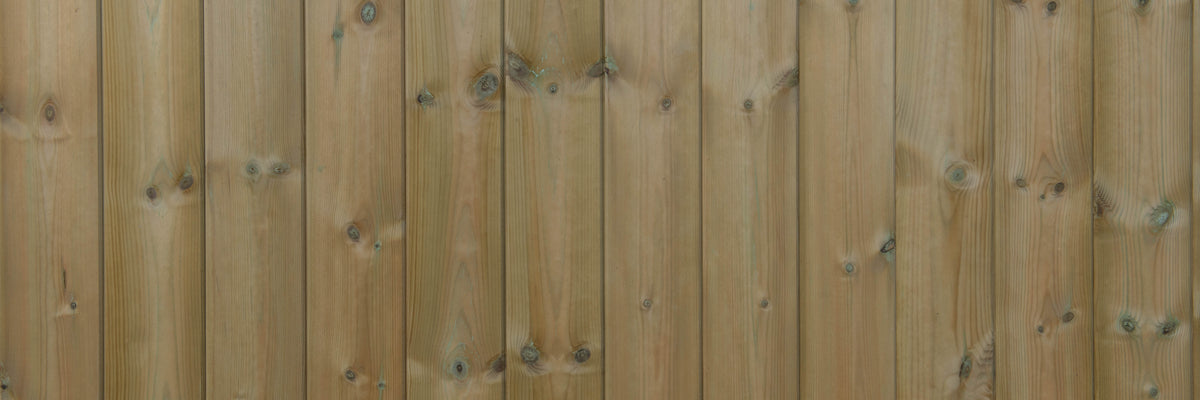Tanalised timber is a type of wood that has been treated with certain chemicals that make it stronger, longer lasting and tougher. It is also known as pressure treated timber. But what is Tanalised timber used for and how easy is it to work with?
The basics of Tanalised timber
The process of creating Tanalised timber involves taking the wood and applying pressure that forces the chemicals into it. The chemical mostly used is called Tanaith E, which is where the wood gets one of its names. There are slightly different processes and chemicals used but the basics remain the same.
There’s a five-step process the wood goes through to be created:
- The timber is loaded into a special chamber and the air sucked out to create a vacuum - this dries out the wood and removes any air
- The chamber is flooded with the Tanalith E preservative
- Hydraulic pressure is applied, forcing the chemical deep into the wood
- A second vacuum process removes any excess preservative which is saved for the next piece of wood
- Low pressure makes the surface solution vent into the atmosphere and the wood is left to dry
This process creates the UC3 grade timber. There is also a UC4 grade which involves the timber being kiln-dried to reduce the moisture content to around 28%. The preservative is then added. The extra step can add 10-20 years to the outdoor lifespan of the wood, depending on conditions and use.
Once the wood has received the treatment, it is much more resistant to things that cause decay and weakness in wood such as rot, fungus, mould and insect damage. It is also more resistant to weather conditions.
How long does Tanalised timber last?
One of the reasons that Tanalised wood is so popular is that it has an enhanced lifespan due to the process used. Of course, the conditions will still make a difference in how long it lasts. A shed standing on the windy side of a hill with no shelter and constant weather pressure will have a shorter lifespan than a shed in an urban garden, surrounded by high fences and buildings.
As a general rule, Tanalised wood will last around 30 years outside and around double that when used inside. This is without any kind of treatment, staining or other protections - these can make the wood last longer.
How do you treat Tanalised timber?
One of the benefits of using this type of wood is that you don’t have to treat it. That’s why you’ll find treated timber joists and other structural elements - the wood doesn’t need special care to do its job.
But that doesn’t mean that you can’t treat it to help enhance its lifespan, especially when used outside. The right treatment will help to extend the lifespan but also keeps the wood in its original colour - without this, it will change colour over time to a grey shade.
You can buy specialist Tanalised timber treatments that are applied over the wood like a varnish. This is best applied after around 12 months of the timber being in place and should be repeated each year.
Can you paint the timber?
You can paint Tanalised wood but you do need to make sure it is dry and the process of tanalising has been complete for some time, otherwise, the paint simply won’t stick to it. Wait until it is dry after the initial process the use a wood preservice. Now you can paint once the preservatives instructions have been followed.
For exterior use, go for a paint that is suitable for outdoor use and add a primer that specifically says it is for pressure-treated wood. Once the primer is completely dry, then you can add the paint. Latex-based paints can prove easier to work with than oil-based paints as sometimes the oil makes it harder for the paint to stick.
Some people recommend waiting around six months before painting the wood to allow it to completely dry. Always ask the supplier when buying the wood what their best recommendation is for the product they are selling.
Can you stain Tanalised timber?
The third option for personalising the look of the wood is to consider staining it. Like with painting, you’ll need to make sure the wood is completely dry from the tanalising process before you attempt to do anything. That is usually around three days of good weather outdoors.
If you are unsure if the wood is ready, spill a little water onto the surface. If the water is soaked up, you are ready to stain it. But if it sits on the surface in beads, then leave it a bit longer.
Is Tanalised timber safe?
Because the process of creating Tanalised timber involved chemicals, it is understandable that people are concerned about safety. However, the products on sale from reputable companies around the UK conform to the British Standards and other measures in place that ensure they are safe.
The process has been tested and confirmed as safe for children and animals so is okay for use in anything from children’s climbing frames to animal pens.
A tough timber for the job
Tanalised timber is a popular choice for things like garden sheds and structures as well as for elements inside the construction of a building. It is tough, long-lasting and doesn’t need much care to keep it in top condition.
There are several other types of treatment available which you can learn more about on our Timber Jargon Buster page
Do you always need treated / tanalised timber?
There is no benefit in using treated timber in dry, internal spaces. There is an extra 10-15% premium verses untreated timber and why add extra chemical carcinogens to the construction process when you don't need to?
What is the tanalising process?
This video on tanalising explains more




